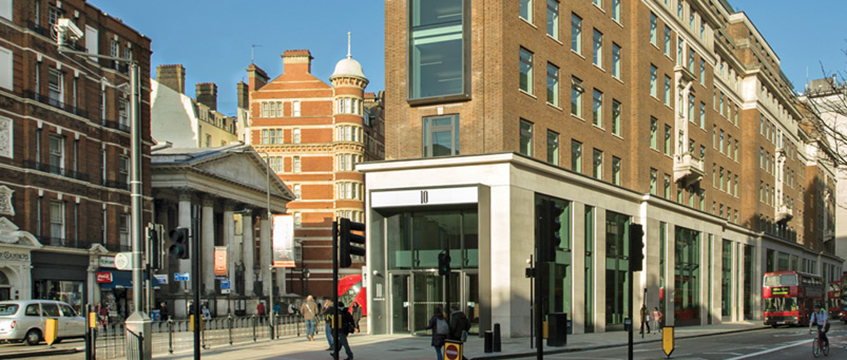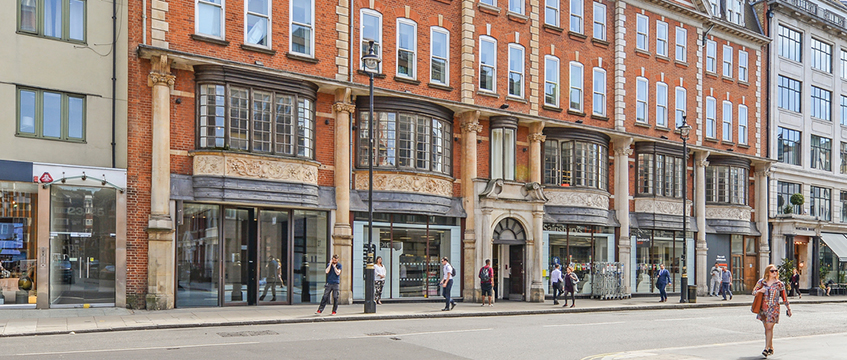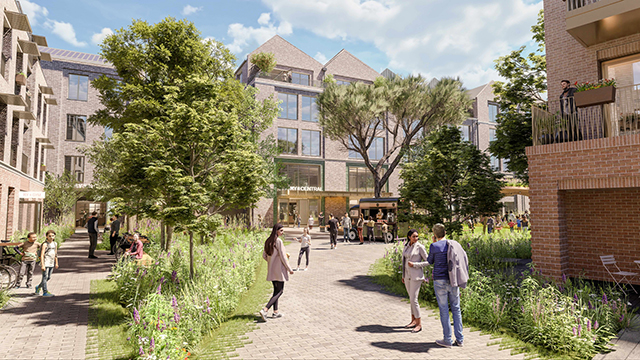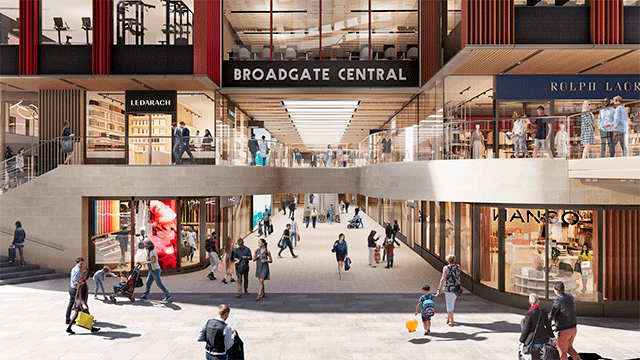A Munich-based fund is close to buying one of the Crown Estate’s West End freeholds, as German institutional investment in London offices increases.
Meag is buying the freehold of 10 Bloomsbury Way, WC1, for a yield of less than 3% – the latest deal in a new spending spree among German open-ended funds.
The £33m purchase comes after CBRE reported earlier this week that Europeans were the most active office investors in central London in the second quarter of 2017, for the first time since the second quarter of 2012.
According to Savills, German institutional investors have been markedly prolific: in the City, total German investment hit £974m in the first half of the year, compared with just £160.5m in the whole of 2016; in the West End, total German investment was £861.5m, compared with £215.38m in of 2016.
These significant leaps were underpinned by several large deals. The two biggest central London transactions of the quarter were both to German investors – the £485m sale of Cannon Place, EC4, to Deka Immobilien and 2&3 Bankside, SE1, to Deutsche Asset Management for £310m.
Other headline deals included in April, German institutional investors, advised by Deutsche Finance International, buying Capital & Counties’ Olympia London scheme in West Kensington, W14, for £296m. And in June, Union Investment buying Derwent London’s 107,150 sq ft Copyright Building in Fitzrovia, W1, for circa £165m – a 4.2% yield.
At sub-3%, the latest sale to Munich-based insurer Meag is at a particularly low yield, because it has an ongoing requirement for long-dated, freehold ground rent-style income. That said, all German funds have money that they want to deploy in the UK capital, with a typical yield target of 4-5%.
Indeed, during May, German open-ended funds posted their second-highest new business since 2008 equity funds registered inflows. Assets managed by fund companies via property funds rose from €131.3bn to €157.5bn since the end of March 2015 – a 20% increase. This is largely due to low interest rates and the lack of alternative investment, such as bonds.
German Investment into the City of London
|
Year |
Volume |
Number of transactions |
Average lot size |
|
2017 |
£974m |
3 |
£324.67m |
|
2016 |
£160.5m |
5 |
£32.10m |
|
2015 |
£711.6m |
6 |
£181.61m |
|
2014 |
£293m |
2 |
£146.50m |
|
2013 |
£613m |
3 |
£204.33m |
|
2012 |
£766.37m |
7 |
£109.48m |
With so much money to spend, these pan-European funds are chasing London offices because prime yields in Paris, Berlin, Frankfurt and other major cities on the continent come in under 4%.
That picture is complicated by the fact that such low interest rates across the Channel mean that the cost of debt is lower. However, the appetite is far higher than the amount of supply coming to the market, and despite having large London requirements, German retail funds are struggling to find the stock.
“They never really left the market,” said Colliers International head of international capital markets Andrew Thomas. “They have been priced out, and they don’t want to be buying for buying’s sake.”
Some open-ended funds, such as Union Investments, have been closing their doors to new retail investors to avoid storing up large pools of cash on deposit in a low-interest-rate environment in Germany. Others have begun acting as fund managers for third party capital.
James Hammond, head of West End investment at CBRE, said: “A lot of these German open-ended funds are pan-European and have to look at London relative to other markets. Prime yields here give a greater income than Paris or Berlin, for example.” Hammond added that the spike in German investment is not a conscious decision, but more opportunity-led.
He said that because German investors have been in the London market for 20 years, they are sophisticated investors with a strong track record in completing on transactions quickly and professionally, giving them an advantage over buyers from further afield.
German institutional investment into the West End
|
Year |
Volume |
Number of transactions |
Average lot size |
|
2017 |
£861.5m |
4 |
£215.38M* |
|
2016 |
£216.25m |
1 |
£216.25M |
|
2015 |
£300m |
2 |
£150.0M |
|
2014 |
£55.5m |
1 |
£55.5M |
|
2013 |
£0 |
0 |
£0 |
|
2012 |
£403m |
3 |
£134.33m |
One senior fund manager at a German bank said: “There are a number of factors – relative pricing in Europe is still tight, although if you look at volumes of German transactions, they will be heavily skewed because of the big City deals.
“I actually don’t think there is any uptick in German interest – consistently we have been putting £100m-£500m into the market each year, but it is more to do with the diminishing of interest from Hong Kong and the Far East generally.”
Nonetheless, the consensus is that the Brexit vote led to a pause in activity in the second half of last year. That’s is why pent up German demand has been so prolific over the first half of this year, as uncertainty becomes the status quo.
In this new environment, investors are looking for long-dated, secure income streams rather than spending their time on slightly riskier territory than they might have inhabited pre-referendum.
James Goldsmith, director of central London markets at Savills, said: “The German funds have shown themselves capable of taking market risk under the right circumstances.
“If you could take Brexit out of the equation, then the circumstances would be different. The requirement is for quality real estate available in London and the UK, that is comparatively well priced and has very secure long-term income, which they can’t get in Europe.”
Funds are still treading carefully in spite of this. Martin Brühl, chief investment officer at Union Investment Real Estate, said that, although he continues to regard London as a key target market within Europe, “Against the backdrop of the ongoing Brexit negotiations we are currently required to perform a particularly thorough risk analysis and consider a range of factors in the UK.”
To send feedback, e-mail nick.johnstone@egi.co.uk or tweet @n_johnstone or @estatesgazette











